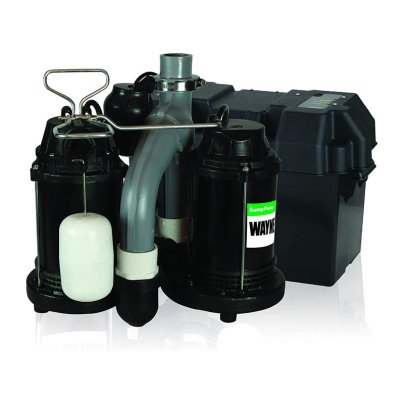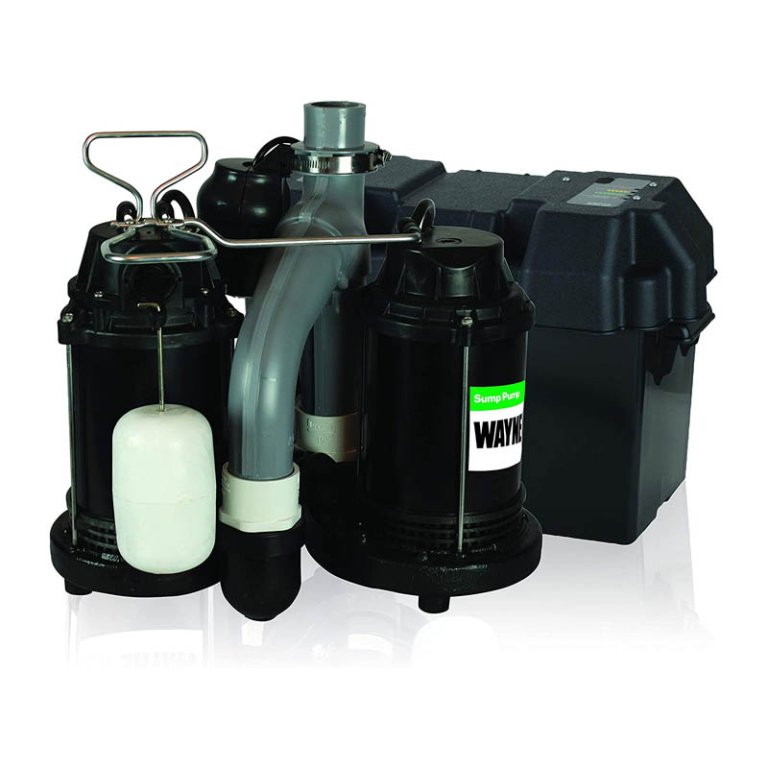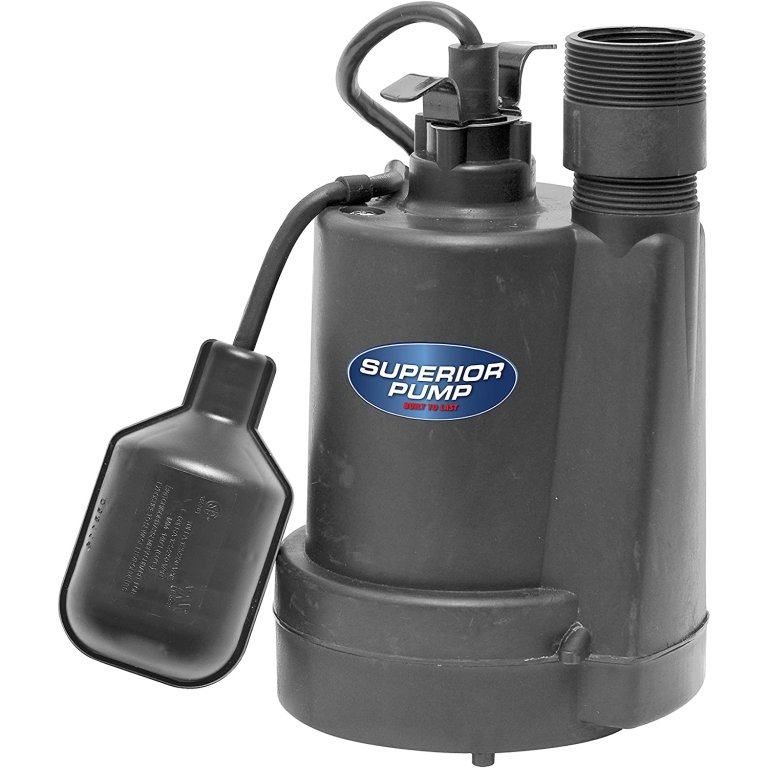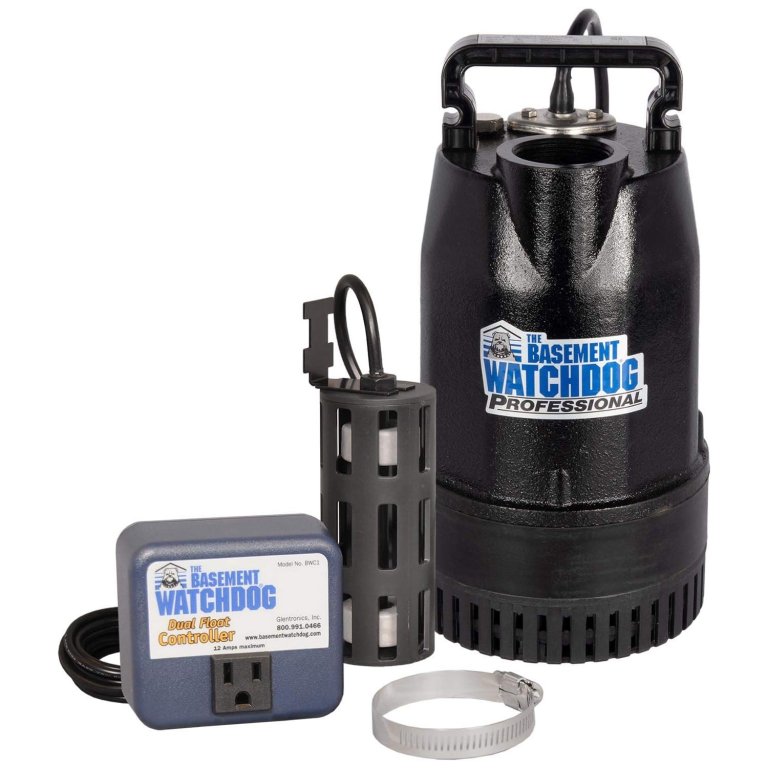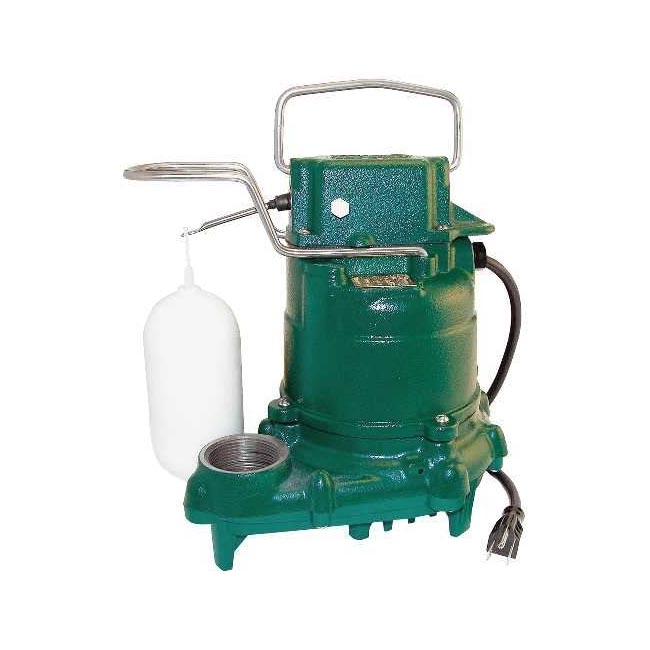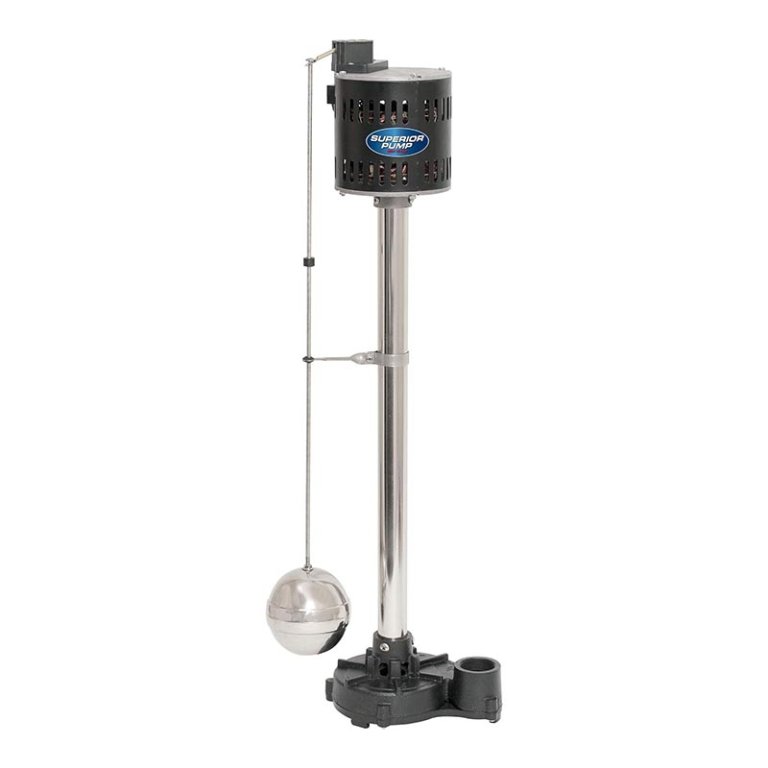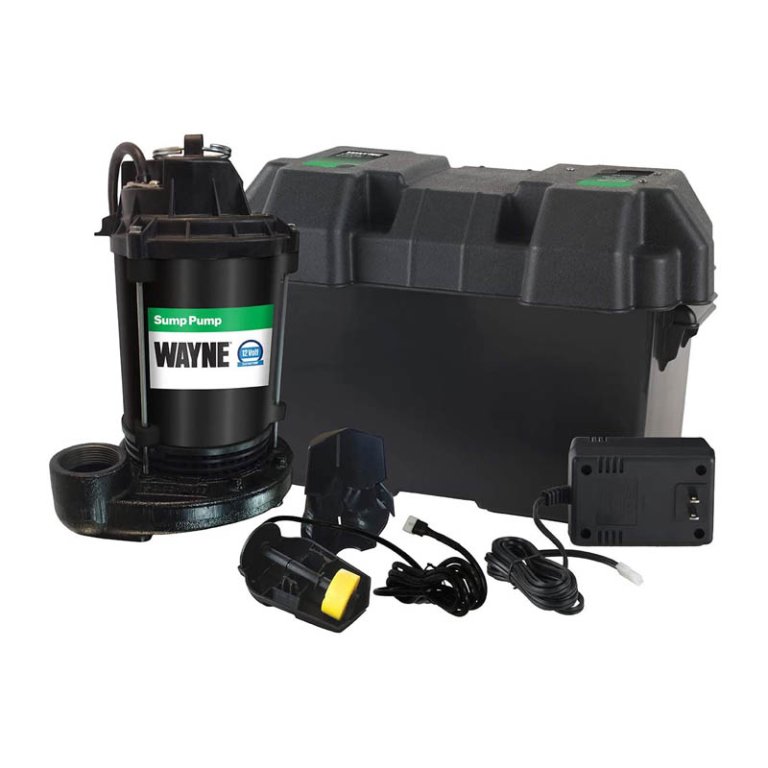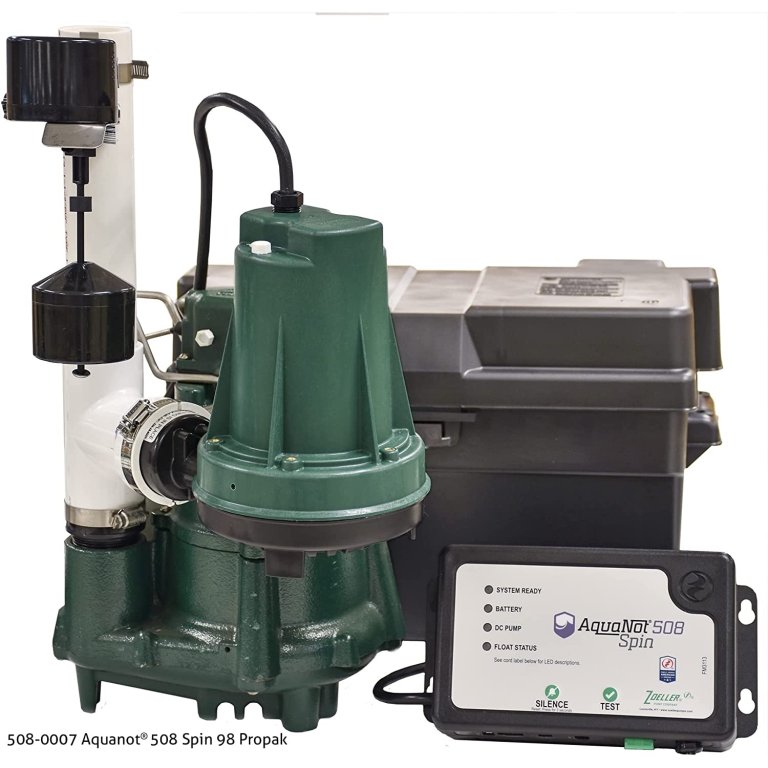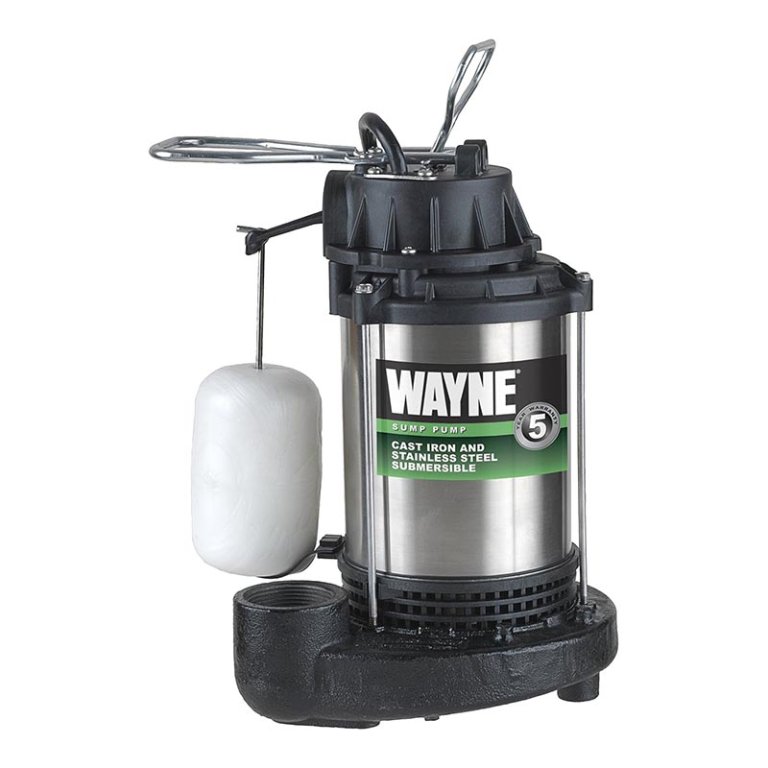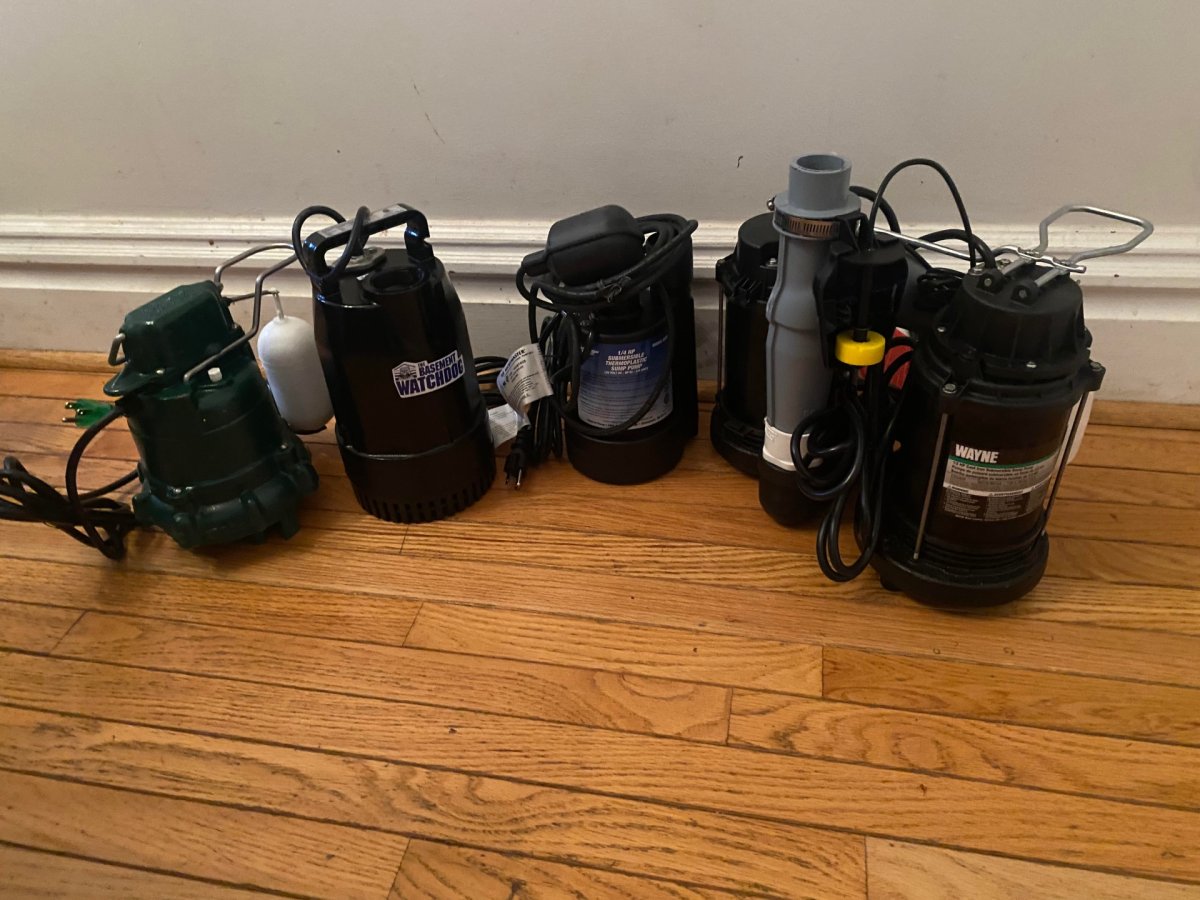
We may earn revenue from the products available on this page and participate in affiliate programs. Learn More ›
A good sump pump is invaluable in times of flooding to prevent the damage caused by water standing for an extended period of time, minimizing the damage and discouraging mold and mildew from forming. Sump pumps typically sit on the basement floor or reside in a pit set below the floor. Once standing water reaches a certain level, the pump turns on and pushes groundwater out and away from the home’s foundation.
We used sump pump reviews and user experiences to get a feel for which sump pumps were considered the best and why. We then selected several of the top-rated sump pumps on the market for closer scrutiny. We tested four of these pumps, our favorite of which was the Wayne WSS30Vn Basement Backup Sump Pump because of its ease of setup, reasonable price, and high water-pumping capacity.
Below, you’ll find a guide explaining what you should know before buying a sump pump, as well as a roundup of some of the best sump pump options available based on our research and testing.
- BEST OVERALL: Wayne WSS30Vn Basement Backup Sump Pump
↓ Jump to Review - BEST BANG FOR THE BUCK: Superior Pump 92250 ¼-HP Thermoplastic Sump Pump
↓ Jump to Review - BEST ENERGY-SAVING: Basement Watchdog SIT 50-D Sump Pump
↓ Jump to Review - BEST VALUE CAST IRON: Zoeller Model 53 Submersible Sump Pump
↓ Jump to Review - BEST PRIMARY: Superior Pump 92551 ½-HP Cast Iron Pedestal Pump
↓ Jump to Review - BEST BATTERY BACKUP: Wayne ESP25 Reinforced Battery Backup Sump Pump
↓ Jump to Review - BEST COMBINATION: Zoeller Aquanot Spin 508 Sump Pump With ProPak
↓ Jump to Review - BEST SMART: Basement Watchdog BWSP Special Connect Sump Pump
↓ Jump to Review - MOST VERSATILE: Wayne CDU1000 1-HP Submersible Sump Pump
↓ Jump to Review
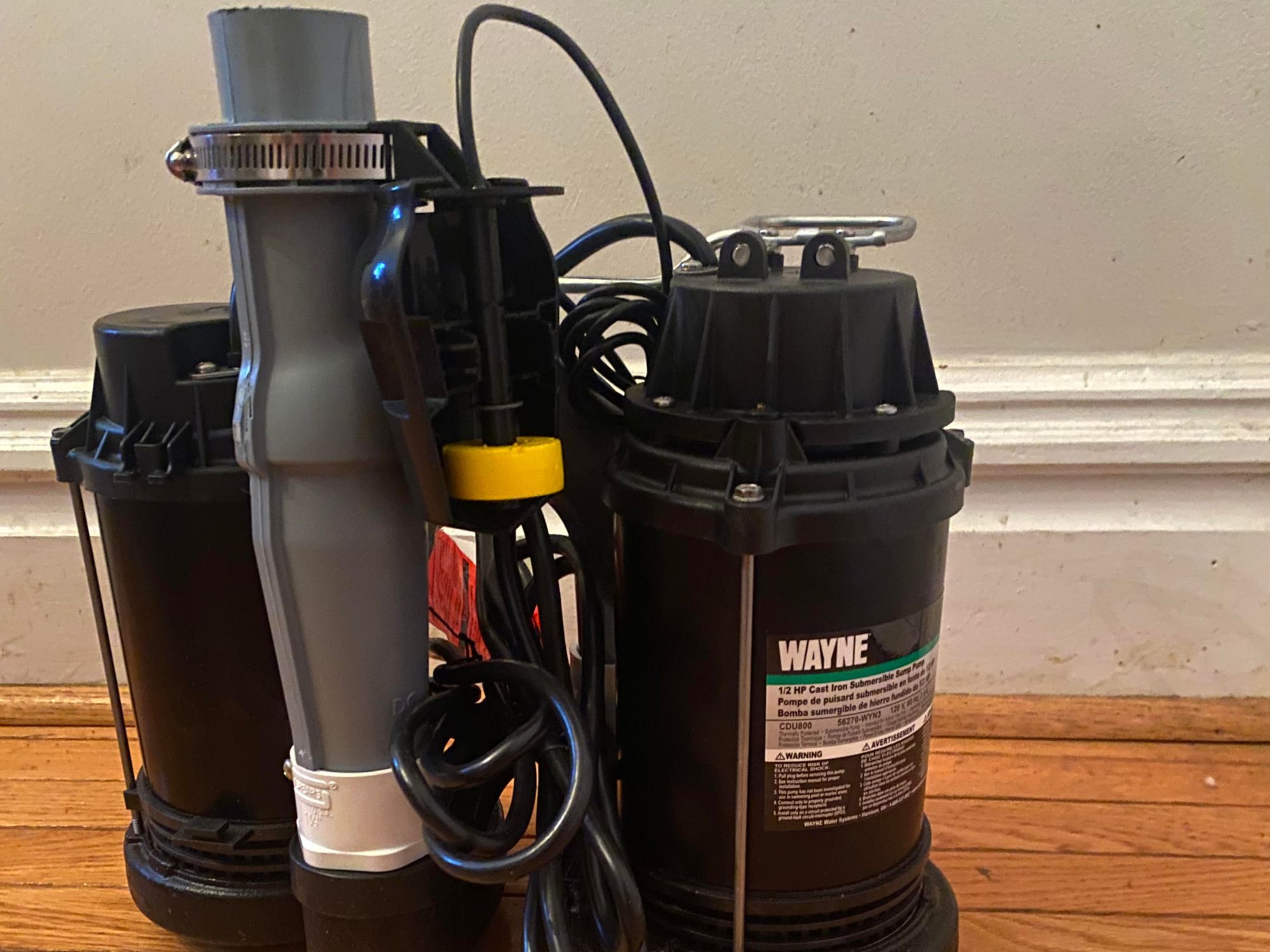
Our Top Picks
To select our top picks, we considered some of the highest-performing sump pumps offered by the industry’s most reputable manufacturers. As such, what you’ll find below is what we think are the best sump pumps for crawl spaces and basements.
Best Overall
Wayne WSS30Vn Basement Backup Sump Pump
See ItWhat We Like
- Comes pre-assembled; hardly any installation required
- Can pump about 5,100 gallons of water per hour (GPH)
- Backup battery can handle 10,000 gallons per charge
What We Don’t Like
- Not very versatile; can only work indoors
Specs
- Type Combination
- Flow rate 2,700 to 5,100 GPH
- Motor power ½ horsepower (hp)
Our Ratings: Ease of Setup 5/5; Pumping Capacity 5/5; Price 4/5
For moisture-prone areas that experience regular flooding and power outages, you need a powerful sump pump that will keep your basement dry—even when the power’s out. This combination sump pump comes equipped with a ½ hp motor capable of pumping out up to 5,100 GPH when the power is on and up to 2,700 GPH when it isn’t. Operating off of a 75-amp hour backup battery, this submersible sump pump will continue operating for hours after the power goes out.
This basement sump pump conveniently switches over to battery power during outages, preventing delays in pumping. Among the top-rated water pumps out there, this basement and crawl space sump pump will work in basins 16 inches in diameter and larger.
The test for this pump was straightforward: we tried to overwhelm it. The test basically involved creating our own basement “flood,” using a hose to pour water into the basin. The hose was no match for the pump, which handled the inflow of water without issue. Even hitting the main breaker to turn off the power had little effect; the backup battery ensured that the pump just kept going.
What our tester says: “I was really impressed with the Wayne WSS30Vn. Aside from its impressive performance, I also appreciated how easy it was to set up. It went from box to pumping in just a few minutes, which isn’t always the case with sump pumps.”—Mike Larson, Product Reviews writer and tester
Get the Wayne WSS30Vn sump pump at Amazon, The Home Depot, or Northern Tool + Equipment.
Best Bang For The Buck
Superior Pump 92250 ¼-HP Thermoplastic Sump Pump
See ItWhat We Like
- Lightweight, submersible design is easy to install
- Tethered float activates pump if water level rises
- Portable sump pump; usable indoors and out
What We Don’t Like
- No adapter included
Specs
- Type Submersible
- Flow rate 1,800 GPH
- Motor power ¼ hp
Our Ratings: Ease of Setup 5/5; Pumping Capacity 3/5; Price 5/5
There’s no need to spring for a pump with firehose-like power for basements that only experience minor excess water issues. A light-duty sump pump such as this one from the pump specialists at Superior Pump will do the job well. With a ¼ hp motor, this submersible-style pump is a great option for basements that face occasional light to moderate flooding. It’s capable of pumping out up to 1,200 GPH to a height of 10 feet. It features a suction screen that filters out up to ⅛-inch solids.
The pump’s body is constructed of thermoplastic, which resists corrosion. This reasonably-priced sump pump option is highly functional for basements or for light-duty outdoor activities like pumping out a clogged rain barrel or standing water from an uneven spot on the lawn.
What our tester says: “During testing, I was unable to overwhelm the Superior Pump, and I was happy with the way it moved water when it was completely submerged. That being said, there’s no denying that its ¼ hp motor is definitely on the lower end in terms of pumping capacity. Still, I appreciated its versatility and portability.”—Mike Larson, Product Reviews writer and tester
Get the Superior Pump 92250 sump pump at Lowe’s or The Home Depot.
Best Energy-Saving
Basement Watchdog SIT 50-D Sump Pump
What We LikeWhat We Like
- Heavy duty; outer shell is made of cast iron
- Permanent Split Capacitor motor delivers industry-leading energy efficiency
- Equipped with two float sensors for extra protection
What We Don’t Like
- A little pricey for a ½ hp pump
Specs
- Type Submersible
- Flow rate 3,420 GPH
- Motor power ½ hp
Our Ratings: Ease of Setup 5/5; Pumping Capacity 4/5; Price 3/5
The first thing you notice when you take the Basement Watchdog out of the box is that it is not a lightweight pump. While most of the pumps we tested (and most on the market) feature a plastic housing, the Basement Watchdog is made of cast iron. Just the feel of it makes you trust that it’s going to last.
The ½ hp motor keeps the water moving, pumping between 3,500 and 4,400 GPH depending on the water level. The pump also features dual float switches, which is a nice safeguarding feature, just in case one of them fails.
During our testing, we did our best to create a flood, but we were unable to get the pump to flinch. We even manually disabled one of the floats to see if the backup would work. It did. All in all, we felt that this was a high-quality pump we could rely on. The price is steep, but this is a heavy-duty pump that should last much longer than plastic alternatives thanks to its cast-iron housing.
Get the Basement Watchdog SIT-50D sump pump at Amazon, Ace Hardware, or The Home Depot.
Best Value Cast Iron
Zoeller Model 53 Submersible Sump Pump
See ItWhat We Like
- Cast-iron construction is built to last
- Can pass larger solids than many competitors
- Functions at 19¼ inches deep without losing power
What We Don’t Like
- Heavier than comparable models
Specs
- Type Submersible
- Flow rate 1,550 GPM
- Motor power 3/10 hp
Our Ratings: Ease of Setup 4/5; Pumping Capacity 4/5; Price 3/5
Given that submersible pumps spend their lives in murky, damp sump-pump pits, durable materials are necessary to ensure they’ll endure these wet environments. With its cast-iron construction, this green sump pump from Zoeller is built for these conditions. It features a 3/10 hp motor capable of pumping out more than 1,550 GPM, which is ideal for basements with moderate flooding problems.
The Zoeller Model 53 is also powerful enough to pass solids up to ½ inch in diameter. A large float regulates the on/off switch at a water depth of 19¼ inches. The pump also includes a built-in thermal overload to prevent damaging the motor from overheating. While the Zoeller was relatively easy to set up, it is a bit heavier than most of the other pumps, including the Basement Watchdog, which is also made of cast iron. The Zoeller also hits hard at the wallet.
During the course of testing, the Zoeller Model 53 happened to be hooked up during a natural flood. With water coming into the basin, the Model 53 was a savior, keeping things dry and pushing the water out easily.
Get the Zoeller Model 53 sump pump at Amazon.
More Great Options
We tested four of the best sump pumps on the market ourselves, but there are a lot more pumps out there that we were unable to put through the paces. Tapping into our research, we put together a short list of some other pumps we think are worth considering.
Best Primary
Superior Pump 92551 ½-HP Cast Iron Pedestal Pump
See ItWhat We Like
- Heavy, cast iron base gives pump good support
- Air cooled motor keeps pump from overheating
- Solid steel drive shaft made to last
What We Don’t Like
- Pump is susceptible to debris, hindering performance.
Specs
- Type Pedestal
- Flow rate Up to 3,600 GPH
- Battery Power ½ hp
A good pedestal pump will keep its vulnerable motor safely out of harm’s way while performing its duties and will provide easy access when you’re doing routine checks. With its 3-foot height, this pedestal-style primary sump pump from Superior Pump keeps its powerful ½ hp motor dry, while its five-blade impeller pumps out up to 3,600 GPH, or 2,700 GPH at a height of 10 feet.
Features include a durable stainless steel construction and a heavy cast-iron base for stability. An adjustable float switch turns the pump on or off based on water depth. With its impressive motor and its tall design, this heavy-duty sump pump is a great primary option for basements that flood regularly. It can even handle water at temperatures of up to 180 degrees Fahrenheit. Hopefully, you’ll never find yourself in a situation where your basement is flooded with water that hot, but it’s nice to know that this sump is up to the task nonetheless.
Pedestal sump pumps can be bulky, taking up valuable real estate in a basement, but this sump pump’s tall and thin profile keeps it safely out of the way.
Get the Superior Pump 92551 sump pump at The Home Depot or Northern Tool + Equipment.
Best Battery Backup
Wayne ESP25 Reinforced Battery Backup Sump Pump
See ItWhat We Like
- Durable cast-iron construction
- Can move 2,500 gallons of water per hour
- Includes a battery in a corrosion-resistant waterproof case
What We Don’t Like
- Costs a bit more than similar models
Specs
- Type Battery backup
- Flow rate 2,500 GPH
- Battery power 12 volt, 75 amp hours
When a storm is raging and the power goes out, unless you have enough family members to form a bucket brigade, you’d better have a quality battery-powered sump pump to keep your basement from filling with water. This 12-volt battery backup system can serve as your stopgap against a flooding disaster.
The ESP25 from Wayne utilizes a 75-amp hour battery to produce up to 2,500 GPH of pumping volume, and it can pump up to 10,000 gallons of water on a single charge. Its cast-iron construction makes this a durable pump, while its top suction design prevents air locks from happening. The kit comes with a waterproof protective battery case that features an LED display and emits an audible alarm when the pump switches on..
Get the Wayne ESP25 sump pump at Amazon, The Home Depot, or Walmart.
Best Combination
Zoeller Aquanot Spin 508 Sump Pump With ProPak
See ItWhat We Like
- Sturdy, hermetically sealed thermoplastic exterior
- Easy-to-read LED screen
- Flexible battery options
What We Don’t Like
- Pricey when compared to similar options
- Battery must be purchased separately
Specs
- Type Submersible
- Flow rate 72 GPM (ProPak); 35 GPM (backup)
- Battery power ⅓ to ½ hp (ProPak); 12 volt (backup)
For high efficiency and reliable flood protection in a combination unit, look no further than the Zoeller Aquanot Spin 508 combination primary and backup sump pump system. This nested unit features a primary ProPak pump that can move 72 GPM of water at a 5-foot lift and a backup pump that can move 35 GPM at 10 feet on its 12-volt battery.
This combination unit features an engineered thermoplastic exterior, and the housing is filled with oil and sealed hermetically to protect the pumps. The battery charger has an LED screen that displays the voltage left in the battery and other essential system information.
When the power goes off, the Zoeller combination pump system emits an audible alert. The unit works on AC for the primary pump and a 12-volt battery (not included) for the backup pump.
Get the Zoeller Aquanot sump pump at Amazon, Sump Pumps Direct, or Ferguson.
Best Smart
Basement Watchdog BWSP Special Connect Sump Pump
See ItWhat We Like
- Syncs with smartphones and sends alerts via Wi-Fi
- Pairs with downloadable app
- Emits audible alarm when power goes out
What We Don’t Like
- The primary pump is not included
Specs
- Type Battery backup
- Flow rate 2,600 GPH
- Battery power 115-volt AC
Receive notifications when the power goes out with the Wi-Fi–enabled battery backup sump pump from Basement Watchdog. This submersible, backup-only pump is designed to sync with your home’s Wi-Fi system and send notifications directly to your smartphone via a downloadable app. You also can monitor the pit’s fluid level and the remaining battery charge from your phone.
In order to use this pump, you must have a primary sump pump already installed or plan to install one at the same time: This battery backup system is only designed to be used as support for a primary sump pump. When the power goes out, it springs into action, pumping up to 1,850 GPH at a 10-foot lift, or 2,600 GPH at a 0-foot lift. In addition to sending notifications to a smartphone, the backup pump emits an audible alarm when the power goes out or when maintenance is needed.
Get the Basement Watchdog BWSP sump pump at Amazon, Lowe’s, Ace Hardware, or The Home Depot.
Most Versatile
Wayne CDU1000 1-HP Submersible Sump Pump
See ItWhat We Like
- Can move up to 5,400 GPH at a 10-foot depth
- Automatically turns on when water reaches set level
- Works in basins of 11 inches in diameter or larger
What We Don’t Like
- Some users have complained of rust-prone components
Specs
- Type Submersible
- Flow rate Up to 6,100 GPH
- Battery power 1 hp
A powerful unit that is capable of pumping out thousands of gallons of water in an hour is a sensible option for basements prone to flooding. With a 1 hp engine and 1.5-inch diameter discharge, this sump pump submersible can move up to 5,400 GPH to a height of 10 feet and at peak power, it can pump 6,100 GPH. This makes it one of the most powerful submersible sump pumps money can buy.
It’s made of durable cast iron and stainless steel. It also features a top suction design, eliminating the dreaded air lock problem that can stop some sump pumps in their tracks. A large float operates a manual switch, automatically turning the unit on when the water reaches a set level. This automatic sump pump will work in sump pump basins 11 inches in diameter or larger.
Get the Wayne CDU1000 sump pump at Amazon or Ace Hardware.
Jump to Our Top Picks
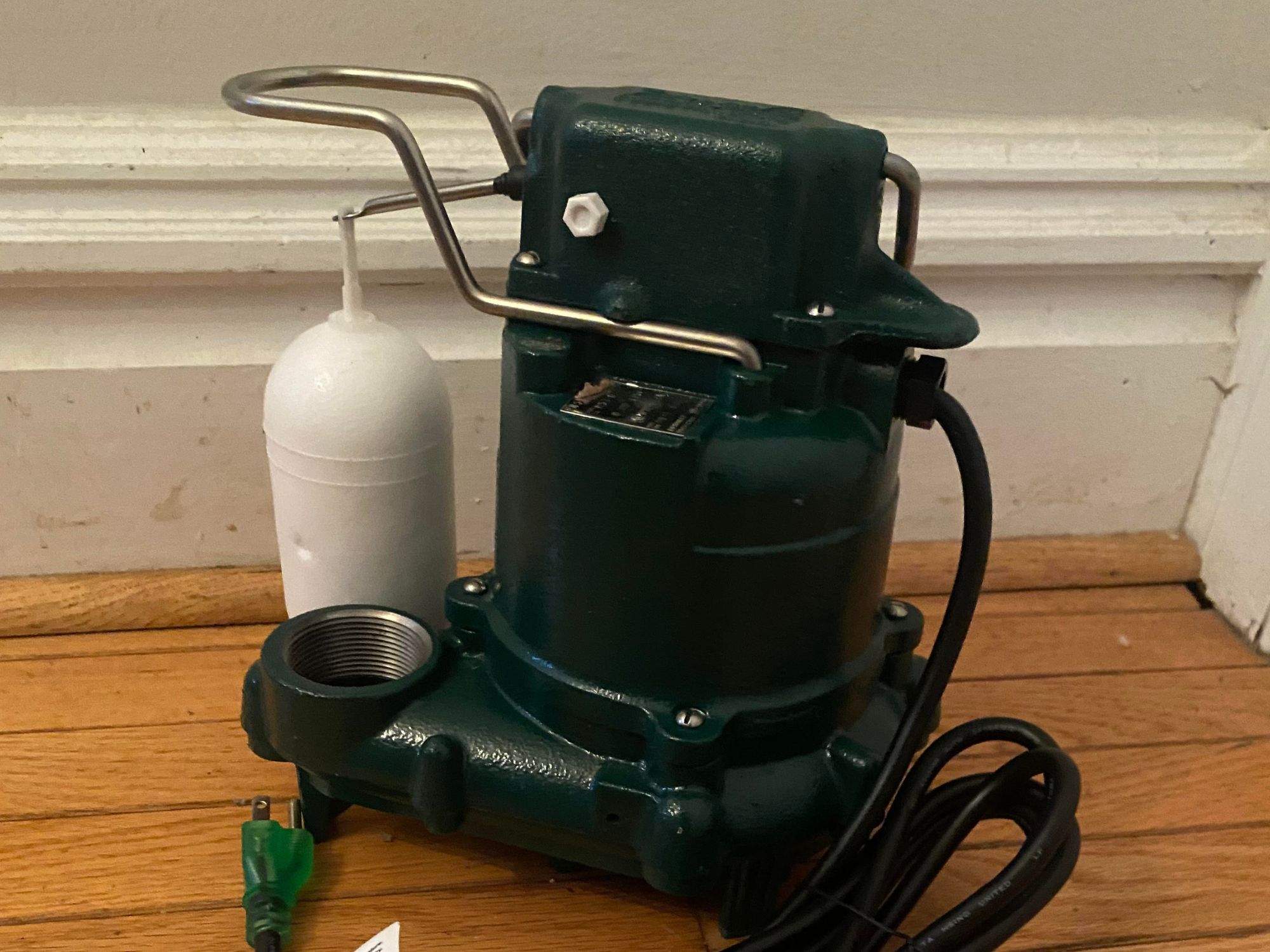
How We Chose and Tested the Best Sump Pumps
Our testing guidelines for these pumps were simple: try to overwhelm them. Each pump spent a week hooked up during autumn’s rainy season in the hope that we would have a big storm. If rain didn’t come, we overwhelmed the pump manually with the help of a hose. We also submerged each pump to see firsthand how much water it could move and how quickly it could do it.
We also interviewed Ben Illig, a general contractor with decades of experience and owner of Ben Illig Construction in Ebensburg, Pennsylvania. His main advice for shoppers is to opt for high-quality options: “Durability is important because it’s something you put in your basement and want to never need to check. If it stops working, your basement floods,” he explained. For this reason, he suggests considering slightly higher price points to ensure you have a reliable and durable sump pump because, as he adds, “You don’t know it’s bad until it’s too late.”
Some of these sump pumps go above and beyond in their user-friendliness by including long power cords, compatibility with various basin sizes, and double-float power switches for ultimate control while using. Make sure that a battery is included with those models that do not have a plug-in feature, as some manufacturers sell batteries separately.
What to Consider When Choosing a Sump Pump
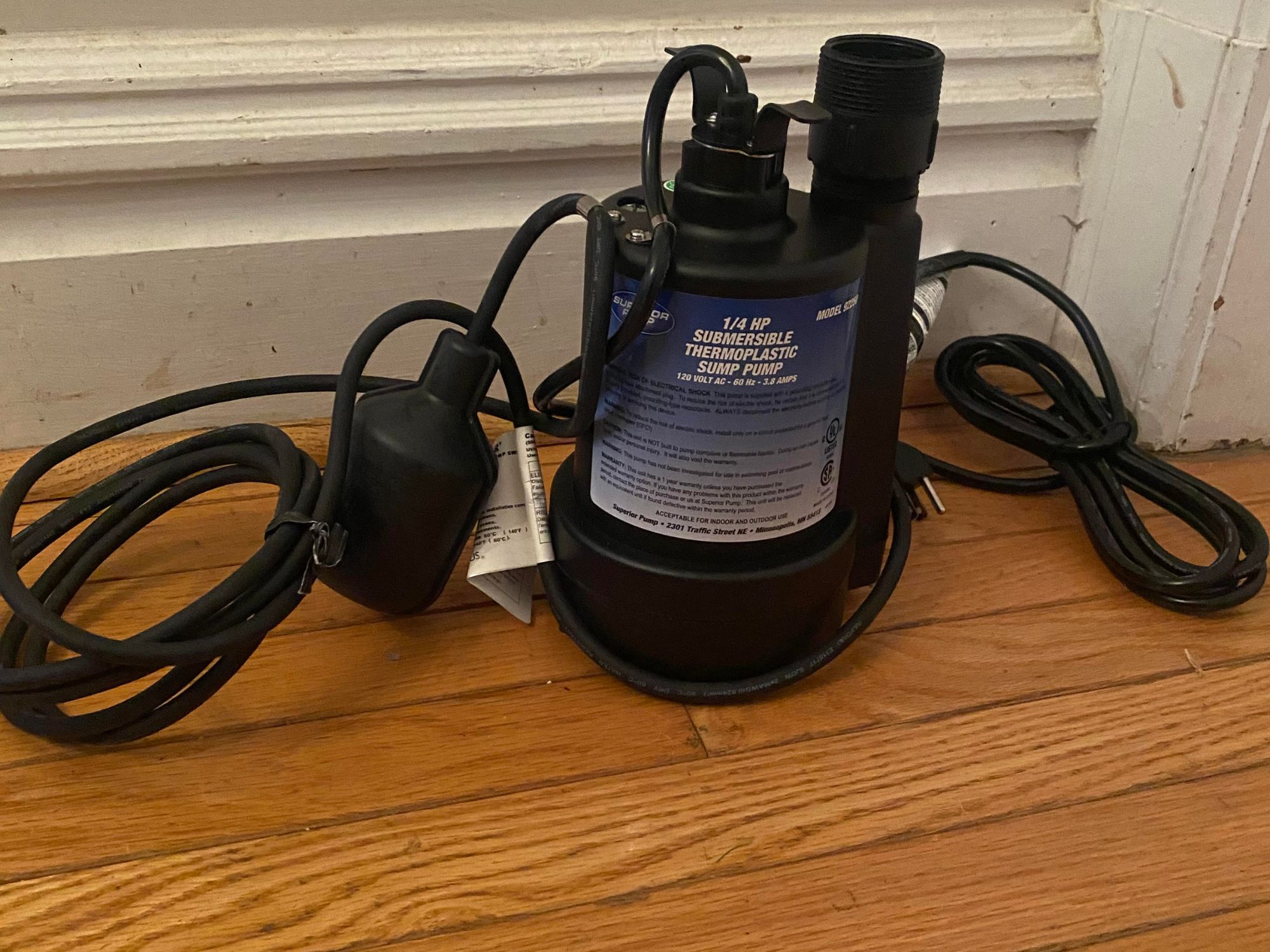
It’s crucial to understand the difference between various types of sump pumps before buying one. It’s also important for shoppers to know which features they should pay closest attention to when choosing between the most reliable sump pump systems, such as the materials, power capabilities, and ease of installation.
Types of Sump Pumps
When shopping for a new sump pump for a home, there are four main types to consider: submersible, pedestal, battery backup, and combination.
Submersible
A submersible sump pump is designed to work in a pit called a sump basin, located below the basement floor’s surface. When water enters the basement, it drains into the pit. Once the water in the pit reaches a certain level, it triggers a sensor on the sump pump. The pump then turns on and begins pumping water out of the basement via a pipe running to the home’s exterior.
Since the pump sits in a sump basin, submersible pumps are quieter than other sump pumps and are out of the way of other activities that take place in the basement. Typically, they are more expensive than other sump pump types.
If you plan on choosing a submersible pump, keep in mind that unless there’s already a pit under the basement floor, you’ll need to have a sump pump basin dug in your basement floor, which can be an arduous and expensive endeavor.
Pedestal
Unlike submersible pumps, which live in a sump pump basin, pedestal pumps sit on the basement floor. They draw in water from the pump’s base and, like a submersible pump, pump the water through a pipe leading to a drainage area outside the home.
The pump’s motor, which is not waterproof, is located at the top of the unit. Pedestal pumps are less expensive than submersible pumps and don’t require the costly expense of digging a sump pump basin; however, the motor’s position on the unit’s exterior makes them noisier than submersible pumps.
Battery Backup
Pedestal and submersible sump pumps cannot work without electricity, which is significant given that flooding often occurs during storms that knock out power. A battery backup sump pump works similarly to a standard sump pump but uses a battery instead of an electric outlet for power. When a power outage sidelines your sump pump, the battery backup pump will step in to pump water out of the basement.
The average battery-powered sump pump can pump up to 100 gallons of water on a single charge. Since battery life is limited, a battery backup will eventually give out during extended power outages; Keeping a spare battery charged is a good idea, but there’s still the possibility that the battery will run out before the water is gone.
Combination
The best sump pump brands include a built-in backup. These versatile units combine a standard electric sump pump with a battery backup option to provide relief in emergency situations. Combination pumps use a single pump and are more cost-effective than purchasing two separate pumps.
They also tend to be larger than standard submersible pumps, so if you have an existing sump pump basin, a combination unit may not fit. Check the minimum basin size requirements for the unit before you make a purchase.
Basin Space
A standard sump pump basin is 30 inches deep by about 18 inches to 24 inches across, giving it a capacity of around 26 to 30 gallons. A sump pump placed in a smaller basin will have to work harder, as the basin will fill more quickly, causing the unit to turn on more often. Different submersible sump pumps require different minimum basin sizes. Those sizes can vary significantly, ranging from 7 inches to 16 inches, so make sure you purchase a submersible pump that will fit the basin in your home.
Core Material
As with any motorized tool or appliance, durability is always an important factor to consider. Sump pumps are built with a surprisingly wide variety of materials. More affordable pumps are made with high-grade plastic that resists wear, while higher-end sump pumps feature stainless steel or heavy cast-iron constructions. Stainless steel has anti-corrosive properties, while cast iron’s efficient cooling abilities help better distribute heat from the motor.
The interior of a sump pump is just as important. Impellers—the fan-like mechanisms that draw water into the pump—can be made of plastic or stainless steel, with the latter being the more durable of the two. The shaft that spins the impeller should be made of steel for long-lasting functionality.
Power Source
Most sump pumps are electric-powered and feature 9-amp motors. Some energy-efficient sump pumps will operate at about half that amperage, saving you electricity and money. Battery backup sump pumps operate off of a 75 amp hours (Ah) battery, which provides enough power to operate at a reduced pumping rate for a few hours before a recharge is needed. Combination sump pumps are electric-powered with a 75 Ah battery backup that springs into action in a power outage.
Horsepower
Sump pumps typically range in power from ⅓ hp to 1 hp. The principle here is simple: the more powerful the motor, the more gallons of water per hour the pump can remove. If you have a moderate to low accumulation of water in your basement, then a low-flow ⅓ hp pump should suffice. However, if your basement is prone to flooding, it’s best to invest in a more powerful 1 hp sump pump.
No-Screen Intake
When a basement floods, it typically isn’t with crystal clear water. Usually, there is a fair amount of debris floating in it. While straining to keep your basement dry, the sump pump will inevitably suck that debris into it. Lower-end sump pump brands feature screens that filter out this material. That helps keep debris out of the impeller, but screens also eventually clog, reducing the pump’s ability to move water until you manually clean it.
Some pumps feature no-screen intakes that can process that solid material and eject it along with the water. These higher-end pumps are worth the additional investment if you have a basement that floods periodically.
Switch Type
The switch is the part of the pump that turns it on and off. Switch types fall into two categories: digital and manual. Manual pumps use a float that attaches to the switch. When the water rises, so does the float, which flips the switch, turning the pump on. When the water level drops, the float drops, and the switch turns off.
These floats can work on a tether that hangs next to the pump or on a vertical rod, which hangs below the pump. While these are effective for most homeowners, this type of switch can sometimes get hung up, especially if the pump basin is small, causing it to malfunction.
A digital switch is mounted vertically in the basin and features two sensors: an “on” sensor and an “off” sensor. When the water rises to a certain level, it triggers the sensor that turns the pump on until the water level drops to the off sensor, which shuts the pump off. Unlike manual sensors, which switch on or off based on one set level, a digital sensor allows the pump to run until it reaches the second sensor before switching off. This allows the pump to operate until the basin is nearly empty.
Special Features and Accessories
Setting up sump pumps for basements requires more than just the pump itself. If you’re using a submersible sump pump, you’ll need a sump pump basin and cover to hold the pump. Basins come in various sizes, so make sure you know what size the sump pump you are purchasing requires.
You’ll also need a discharge hose that carries the water from the sump pump to an area outside your home that drains away from the house. If you’re purchasing a combo kit or battery backup unit, you will need to buy a battery for the unit. Sump pumps typically run off of 75 Ah batteries.
Some household sump pumps will sound an audio alarm when the pump turns on, letting you know there is enough water accumulating in the basement to require its services. There are even high-end “smart” sump pumps that will text you when they switch on.
FAQs
If you have lingering concerns about sump pumps, read on for the most common questions.
Sump pumps use a drain hose to remove water from your basement. A drain hose should extend outside of your home to an area on your property that drains away from your house (and not directly towards your neighbor’s foundation). This is crucial. You don’t want the water you just pumped out to run back into your basement, starting the cycle all over again.
You should clean your sump pump once a year. That said, when your pump tackles an especially hard job, such as removing water from a flooded basement after a bad storm, you should clean it as soon as possible.
On average, sump pumps last about 10 years. Keep tabs on an older unit as you likely won’t notice that it’s no longer working until water is accumulating in your basement.
Homes with below-ground basements usually have a pit underneath the floor where groundwater can collect. When this water accumulates to a certain level, the sump pump activates and removes it from the foundation of the home, keeping the basement dry and safe.
This can vary greatly depending on a home’s surrounding area and the landscape. Sump pumps should run whenever there is an accumulation of water, which can be quite often in wet climates or less often during drier months. Significant rain could cause a sump pump to run multiple times a day for a few minutes each time.
Summer is a great time to install a sump pump, as you’ll likely be dealing with unfrozen ground that has had a chance to dry.
Depending on how often it’s working, a submersible sump pump can last about 7 to 10 years, while a pedestal sump pump can last 20 years or more.
The old adage is true: you get what you pay for. If you live in an area that receives a lot of rain and you have a perpetually wet basement, you may want to spend $200 to $500 on a quality pump. If you don’t get a ton of moisture in your basement, you may feel just as protected with a more economical $75 to $100 pump.
Meet the Tester
Mike Larson is a professional journalist and DIYer in Pittsburgh. He’s become well schooled in sump pumps due to the wet basement in his 100-year-old house. As a product tester, he likes to use a method and criteria that reveal the value of the product as a whole in a way that helps other homeowners.
Additional research provided by Tony Carrick.
